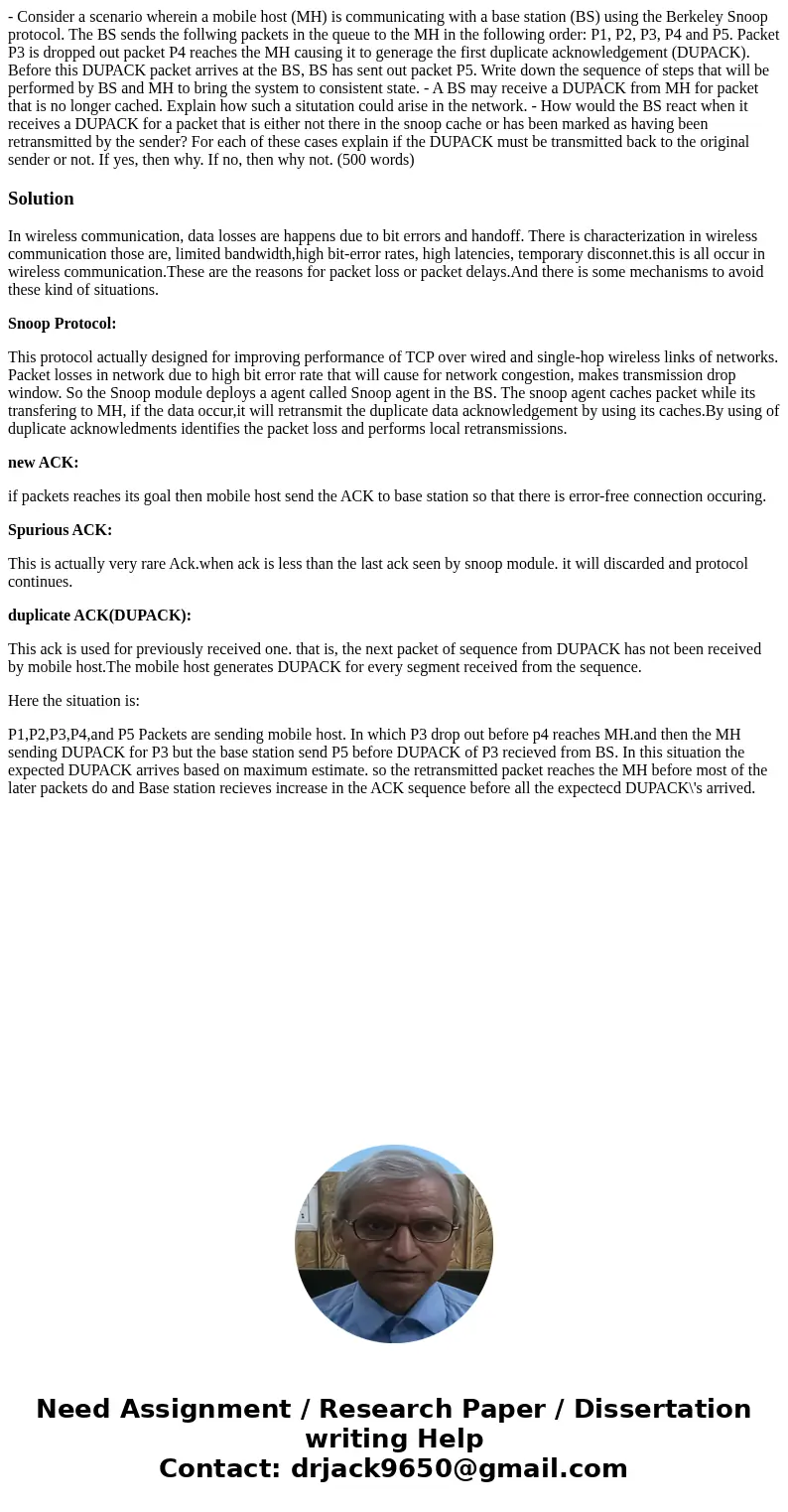Consider a scenario wherein a mobile host MH is communicati
- Consider a scenario wherein a mobile host (MH) is communicating with a base station (BS) using the Berkeley Snoop protocol. The BS sends the follwing packets in the queue to the MH in the following order: P1, P2, P3, P4 and P5. Packet P3 is dropped out packet P4 reaches the MH causing it to generage the first duplicate acknowledgement (DUPACK). Before this DUPACK packet arrives at the BS, BS has sent out packet P5. Write down the sequence of steps that will be performed by BS and MH to bring the system to consistent state. - A BS may receive a DUPACK from MH for packet that is no longer cached. Explain how such a situtation could arise in the network. - How would the BS react when it receives a DUPACK for a packet that is either not there in the snoop cache or has been marked as having been retransmitted by the sender? For each of these cases explain if the DUPACK must be transmitted back to the original sender or not. If yes, then why. If no, then why not. (500 words)
Solution
In wireless communication, data losses are happens due to bit errors and handoff. There is characterization in wireless communication those are, limited bandwidth,high bit-error rates, high latencies, temporary disconnet.this is all occur in wireless communication.These are the reasons for packet loss or packet delays.And there is some mechanisms to avoid these kind of situations.
Snoop Protocol:
This protocol actually designed for improving performance of TCP over wired and single-hop wireless links of networks. Packet losses in network due to high bit error rate that will cause for network congestion, makes transmission drop window. So the Snoop module deploys a agent called Snoop agent in the BS. The snoop agent caches packet while its transfering to MH, if the data occur,it will retransmit the duplicate data acknowledgement by using its caches.By using of duplicate acknowledments identifies the packet loss and performs local retransmissions.
new ACK:
if packets reaches its goal then mobile host send the ACK to base station so that there is error-free connection occuring.
Spurious ACK:
This is actually very rare Ack.when ack is less than the last ack seen by snoop module. it will discarded and protocol continues.
duplicate ACK(DUPACK):
This ack is used for previously received one. that is, the next packet of sequence from DUPACK has not been received by mobile host.The mobile host generates DUPACK for every segment received from the sequence.
Here the situation is:
P1,P2,P3,P4,and P5 Packets are sending mobile host. In which P3 drop out before p4 reaches MH.and then the MH sending DUPACK for P3 but the base station send P5 before DUPACK of P3 recieved from BS. In this situation the expected DUPACK arrives based on maximum estimate. so the retransmitted packet reaches the MH before most of the later packets do and Base station recieves increase in the ACK sequence before all the expectecd DUPACK\'s arrived.

 Homework Sourse
Homework Sourse